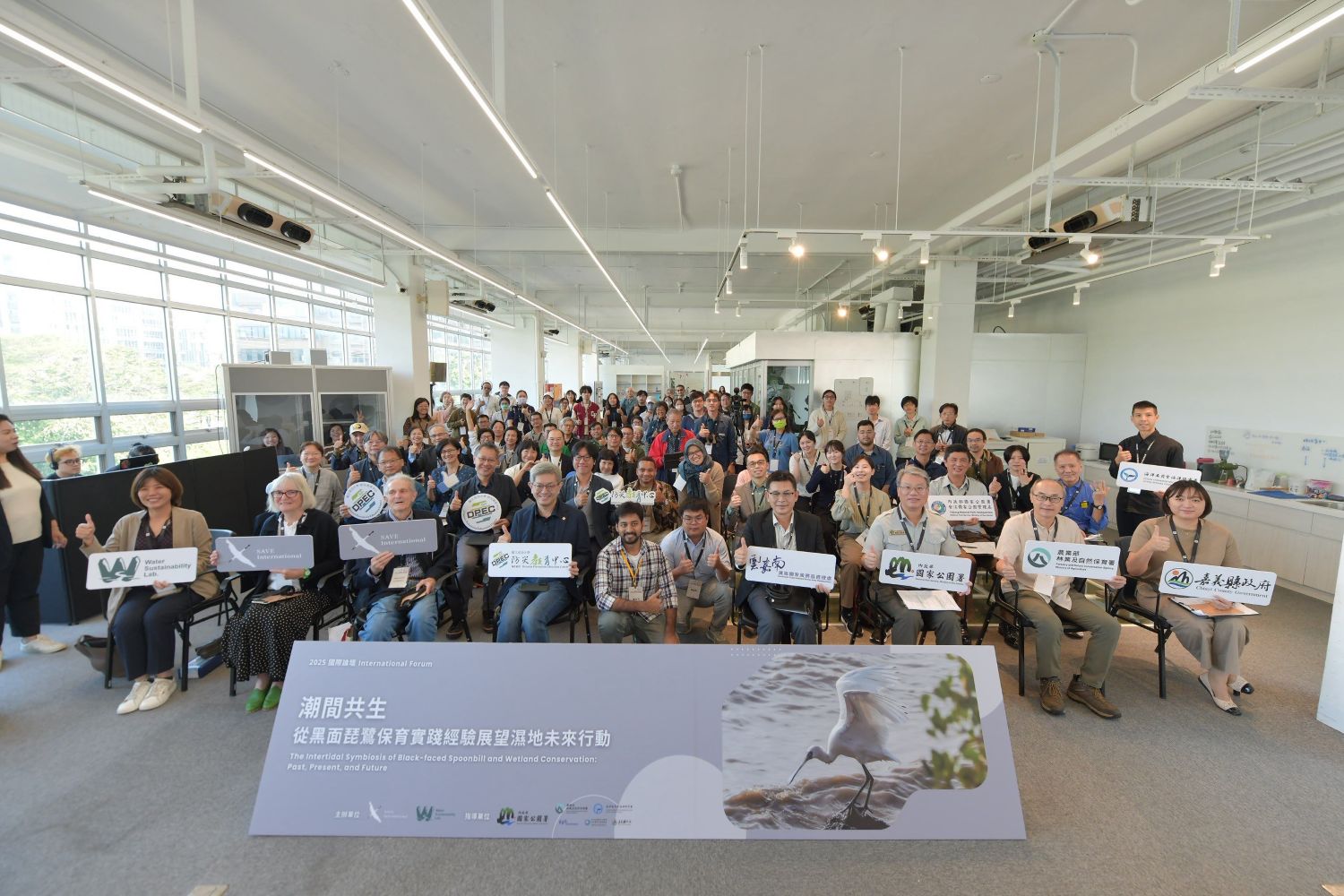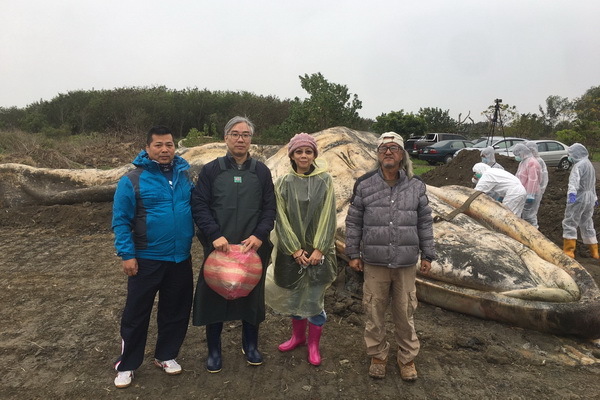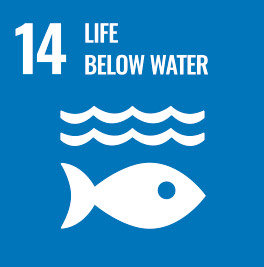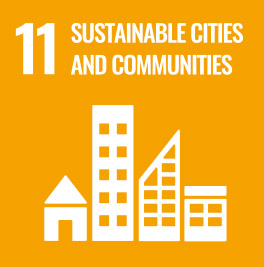NCKU Marine Biology and Cetacean Research Center is now cleaning and preserving the skeleton of the world’s largest whale. The blue whale expired some time ago and drifted in the ocean. It was stranded on a beach in Taitung in January, 2020. After being transported back to NCKU, the skull was found to be severely damaged and shattered. This blue whale is a juvenile whale, which has more cartilage and is not easy to preserve. It is a difficult project to create a full skeleton specimen. Wang Hao-Wen, director of NCKU Marine Biology and Cetacean Research Center, said that the team will pull out all stops to complete the first blue whale specimen in Taiwan.
The first blue whale stranded in Taiwan
"In the past, there are no records of sightings or strandings of blue whales in Taiwan. According to the data, there were 14 records of capture around the Taiwan area during the 1920-1938 period, but there is no exact record of a capture location.", said Wang Hao-Wen, director of the NCKU Marine Biology and Cetacean Research Center. For decades, no blue whale has been recorded in the Taiwan region. According to the "Taiwan's Whale and Dolphin legend" provided by the Forestry Bureau, Council of Agriculture, Executive Yuan, there are nearly 30 observed species from the smaller dolphins to the larger sperm whale, of which there are no blue whales. In addition to understanding the cause of death, the blue whale stranding event has a great significance for the research of blue whales around the world if the bones can be properly preserved. In the face of climate change, marine conservation issues have received greater attention. The International Union for Conservation of Nature (IUCN) has included blue whales in the "IUCN Red List of Threatened Species." Scientists estimate that between 5,000 and 15,000 exist now. The events of illegal fishing or stranding incidents have always attracted great attention from animal protection groups and academia. Wang Hao-Wen pointed out that according to the necropsy evidence, the blue whale was no more than three years old. According to the literature, the blue whale is 7 meters long at birth, and can reach 15 meters in length in approximately 7-months, and achieve a maximum length of 30 meters. The life span of the blue whale is estimated to be 80 to 90 years , and some experts believe the blue whale can reach 110 years!
Difficult task for blue whale research
The NCKU Marine Biology and Cetacean Research Center is located in the southwest corner of the NCKU Annan Campus. The room is filled with whale bones that have been processed for many years. Wang Hao-Wen, professor Wang Jian-Ping NCKU student volunteers, veterinary departments from various universities, and volunteers transported and dissected the blue whale successfully. Wang Hao-Wen emphasized that this is the first record of blue whale stranded in Taiwan in nearly a century. At present, there are not many countries displaying blue whale solid bone specimens, as far as he knows, there are only Canada, the United States and the United Kingdom have displayed. If this blue whale will be exhibited in the future, NCKU will be the first place in Taiwan to display blue whale specimens. Talking about the process of processing the blue whale, Wang Hao-Wen said, "This whale has been hungry for too long." He said; “All the internal organs have decayed, and the muscles have degenerated into blood-like substance.” Although he tried to find food from the remains of the esophagus, stomach and intestine, he found no trace of food. The subcutaneous fat layer was very thin, so it is reasonable to infer that the whale had not eaten for a long period of time. Wang Hao-Wen pointed out that climate change and global warming can contribute to the cause of death, and by analyzing the carcass we can ascertain how the individual died. A few days ago, he went to Mai-Liao(麥寮)Port to process a dead False killer whale (Pseudorca crassidens). is the death was probably related to aging, because the teeth were ground flat and the fat layer was thin. It can be presumed that the body was in a weakened state and had no predation ability.
Drift gill net entrapped bottlenose dolphin (Tursiops truncatus)
Wang Hao-Wen's testimony of an example of a bottlenose dolphin ,who went to the Zhang-Bin Industrial Zone(彰濱工業區) recently. "It was entangled in the gill net. Is the death related to the entanglement of the gill net? It is necessary to prove this and then find out the reason. The dolphin is estimated to have died more than three weeks ago, and much of the evidence has disappeared. The stomach was found empty during the dissection, which means there has been no food intake for a long time period before death, and the subcutaneous fat layer was relatively thin. In general, dolphins entangled in fishing nets cannot break free could drown. However, this dolphin does not have this situation. It is necessary to further analyze.” Wang Hao-Wen said, "It was sad to find that blue whale mouth was entangled with fishing nets. The blue whale food intake method is to open their mouth and inhale copious amounts of seawater, then the mouth is closed and then the abdomen elastically retracts to squeeze out the seawater. The baleen plates will filter out small fish and shrimp for consumption. If the mouth can’t be opened properly, it will inhibit eating. "According to the information collected now, I know that the fishing net was the cause of death. This net is a type of fishing gear used by common fishing methods. The world has begun to reflect on this situation and recommend more ‘whale’ friendly fishing gear and greater fishing conservation behavior. The 14th goal of the United Nations Sustainable Development Goal mentions the importance of Marine protection. We should work hard to restore and understand the circumstances of the blue whale death, and discover things from this evidence, and remind humanity of the serious consequences.
The first blue whale stranded in Taiwan
"In the past, there are no records of sightings or strandings of blue whales in Taiwan. According to the data, there were 14 records of capture around the Taiwan area during the 1920-1938 period, but there is no exact record of a capture location.", said Wang Hao-Wen, director of the NCKU Marine Biology and Cetacean Research Center. For decades, no blue whale has been recorded in the Taiwan region. According to the "Taiwan's Whale and Dolphin legend" provided by the Forestry Bureau, Council of Agriculture, Executive Yuan, there are nearly 30 observed species from the smaller dolphins to the larger sperm whale, of which there are no blue whales. In addition to understanding the cause of death, the blue whale stranding event has a great significance for the research of blue whales around the world if the bones can be properly preserved. In the face of climate change, marine conservation issues have received greater attention. The International Union for Conservation of Nature (IUCN) has included blue whales in the "IUCN Red List of Threatened Species." Scientists estimate that between 5,000 and 15,000 exist now. The events of illegal fishing or stranding incidents have always attracted great attention from animal protection groups and academia. Wang Hao-Wen pointed out that according to the necropsy evidence, the blue whale was no more than three years old. According to the literature, the blue whale is 7 meters long at birth, and can reach 15 meters in length in approximately 7-months, and achieve a maximum length of 30 meters. The life span of the blue whale is estimated to be 80 to 90 years , and some experts believe the blue whale can reach 110 years!
Difficult task for blue whale research
The NCKU Marine Biology and Cetacean Research Center is located in the southwest corner of the NCKU Annan Campus. The room is filled with whale bones that have been processed for many years. Wang Hao-Wen, professor Wang Jian-Ping NCKU student volunteers, veterinary departments from various universities, and volunteers transported and dissected the blue whale successfully. Wang Hao-Wen emphasized that this is the first record of blue whale stranded in Taiwan in nearly a century. At present, there are not many countries displaying blue whale solid bone specimens, as far as he knows, there are only Canada, the United States and the United Kingdom have displayed. If this blue whale will be exhibited in the future, NCKU will be the first place in Taiwan to display blue whale specimens. Talking about the process of processing the blue whale, Wang Hao-Wen said, "This whale has been hungry for too long." He said; “All the internal organs have decayed, and the muscles have degenerated into blood-like substance.” Although he tried to find food from the remains of the esophagus, stomach and intestine, he found no trace of food. The subcutaneous fat layer was very thin, so it is reasonable to infer that the whale had not eaten for a long period of time. Wang Hao-Wen pointed out that climate change and global warming can contribute to the cause of death, and by analyzing the carcass we can ascertain how the individual died. A few days ago, he went to Mai-Liao(麥寮)Port to process a dead False killer whale (Pseudorca crassidens). is the death was probably related to aging, because the teeth were ground flat and the fat layer was thin. It can be presumed that the body was in a weakened state and had no predation ability.
Drift gill net entrapped bottlenose dolphin (Tursiops truncatus)
Wang Hao-Wen's testimony of an example of a bottlenose dolphin ,who went to the Zhang-Bin Industrial Zone(彰濱工業區) recently. "It was entangled in the gill net. Is the death related to the entanglement of the gill net? It is necessary to prove this and then find out the reason. The dolphin is estimated to have died more than three weeks ago, and much of the evidence has disappeared. The stomach was found empty during the dissection, which means there has been no food intake for a long time period before death, and the subcutaneous fat layer was relatively thin. In general, dolphins entangled in fishing nets cannot break free could drown. However, this dolphin does not have this situation. It is necessary to further analyze.” Wang Hao-Wen said, "It was sad to find that blue whale mouth was entangled with fishing nets. The blue whale food intake method is to open their mouth and inhale copious amounts of seawater, then the mouth is closed and then the abdomen elastically retracts to squeeze out the seawater. The baleen plates will filter out small fish and shrimp for consumption. If the mouth can’t be opened properly, it will inhibit eating. "According to the information collected now, I know that the fishing net was the cause of death. This net is a type of fishing gear used by common fishing methods. The world has begun to reflect on this situation and recommend more ‘whale’ friendly fishing gear and greater fishing conservation behavior. The 14th goal of the United Nations Sustainable Development Goal mentions the importance of Marine protection. We should work hard to restore and understand the circumstances of the blue whale death, and discover things from this evidence, and remind humanity of the serious consequences.

SDG14The 2024 Taiwan Ocean International Forum explores the importance of restoring and protecting blue carbon ecosystems
View more
SDG14Marine Biology and Cetacean Research Center Does Its Best to Preserve the Blue Whale’s Skeleton
View more




















